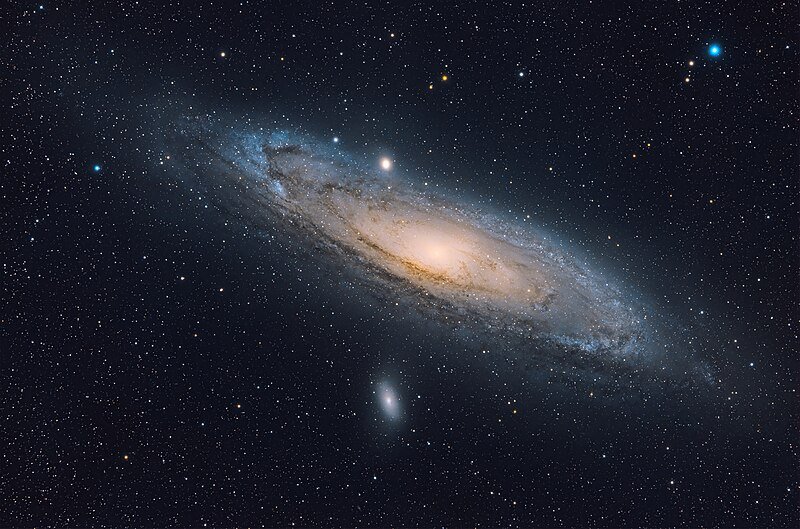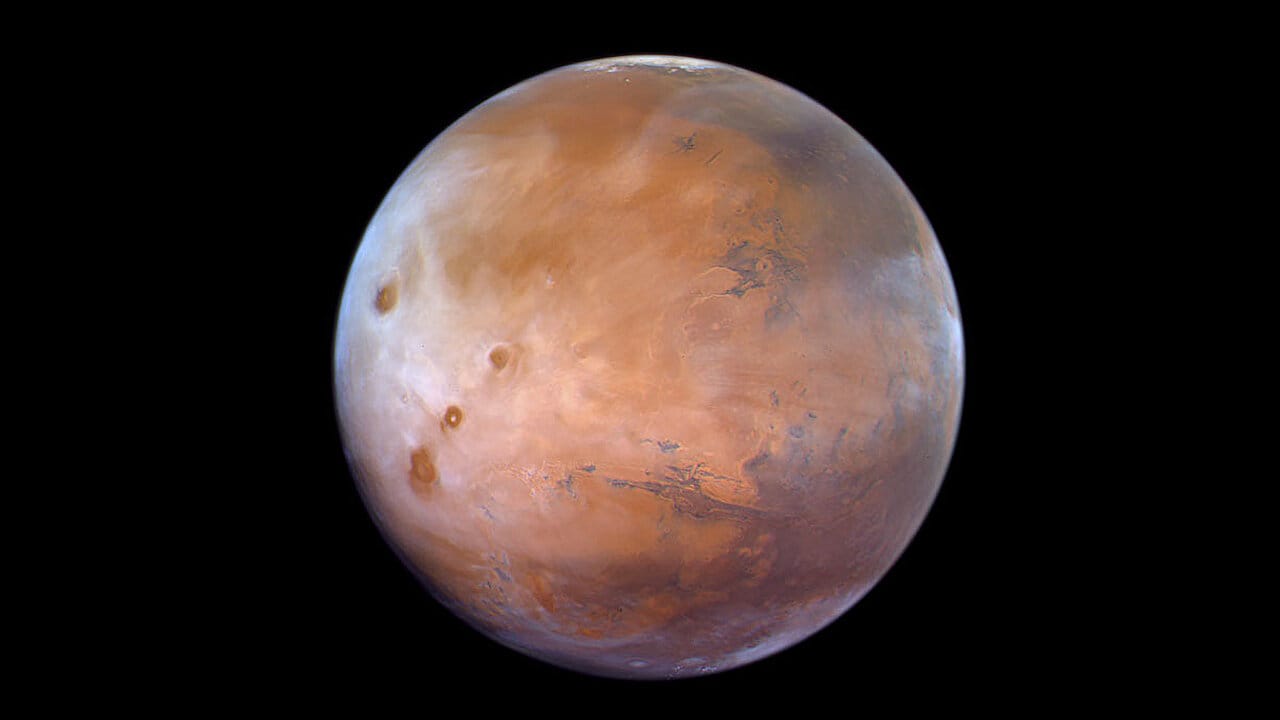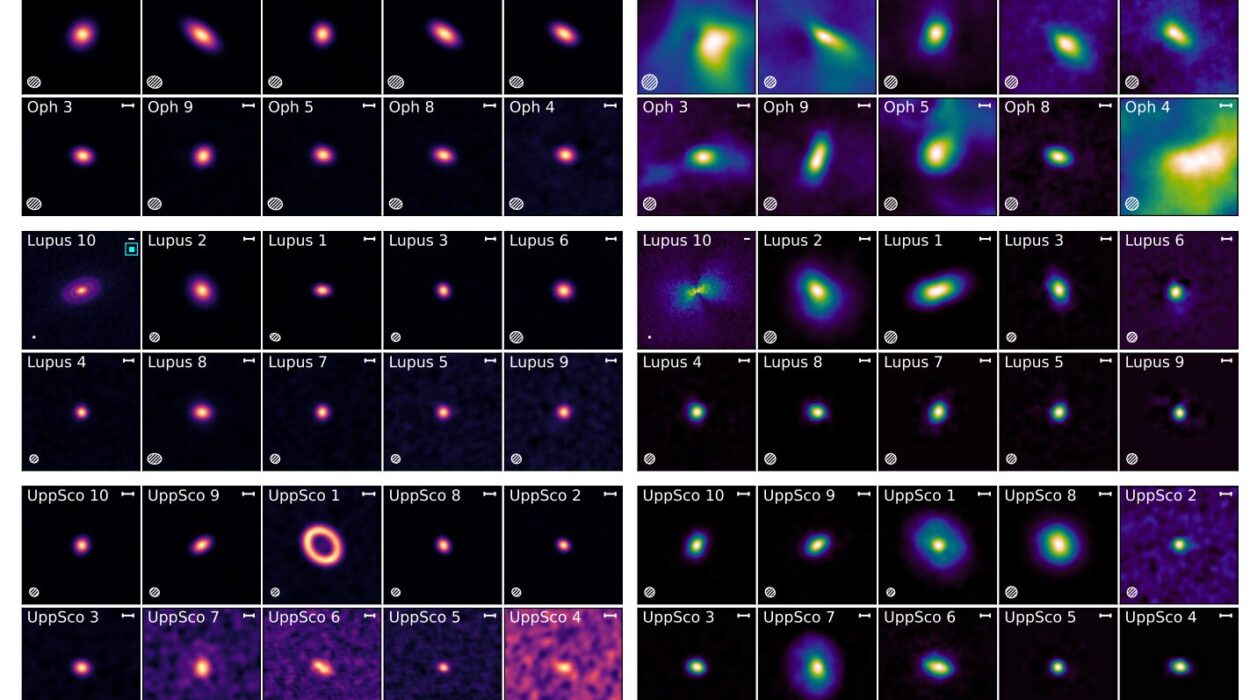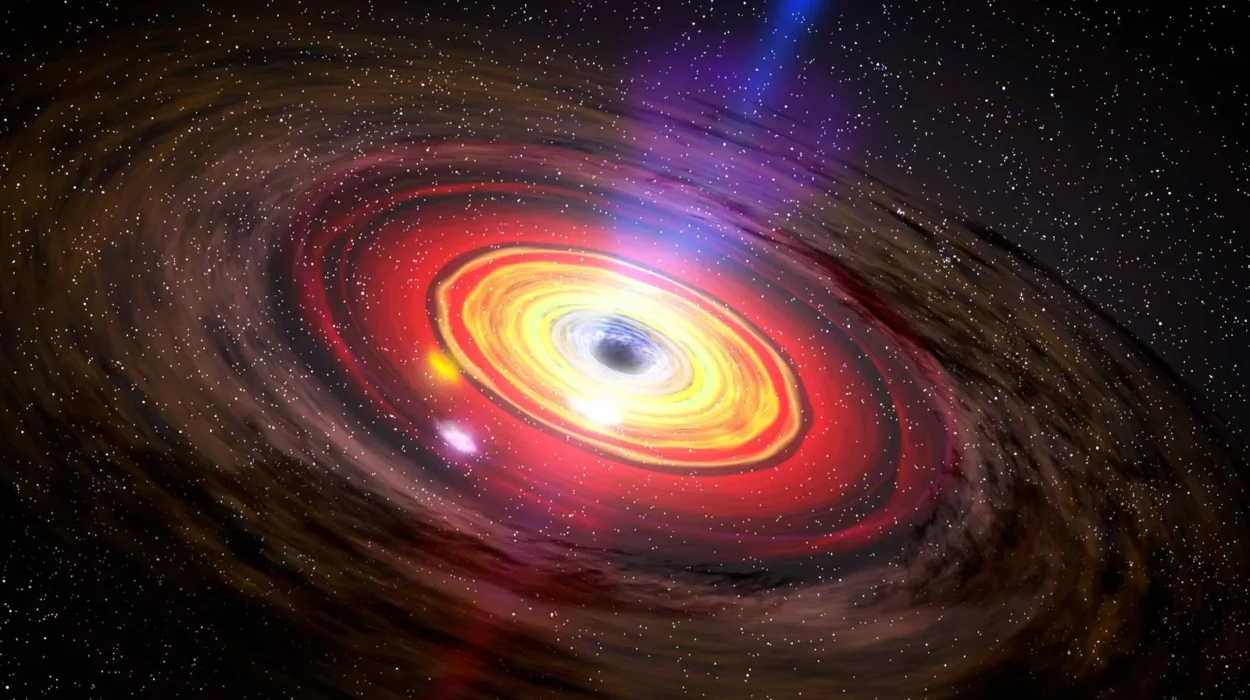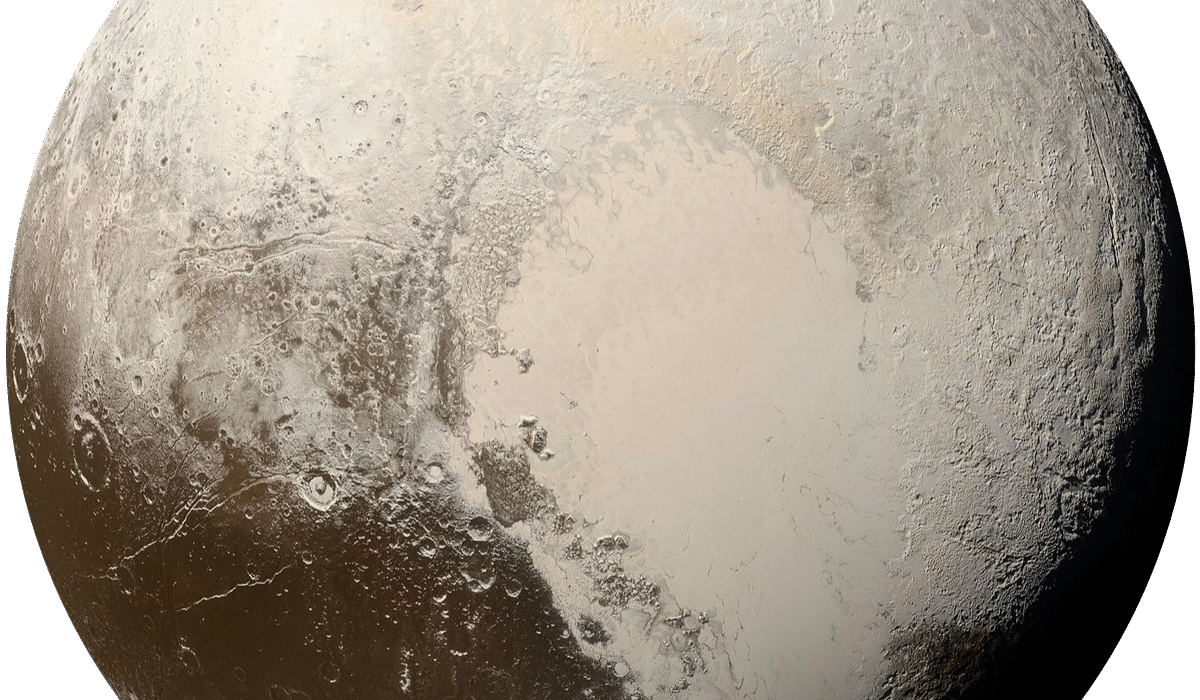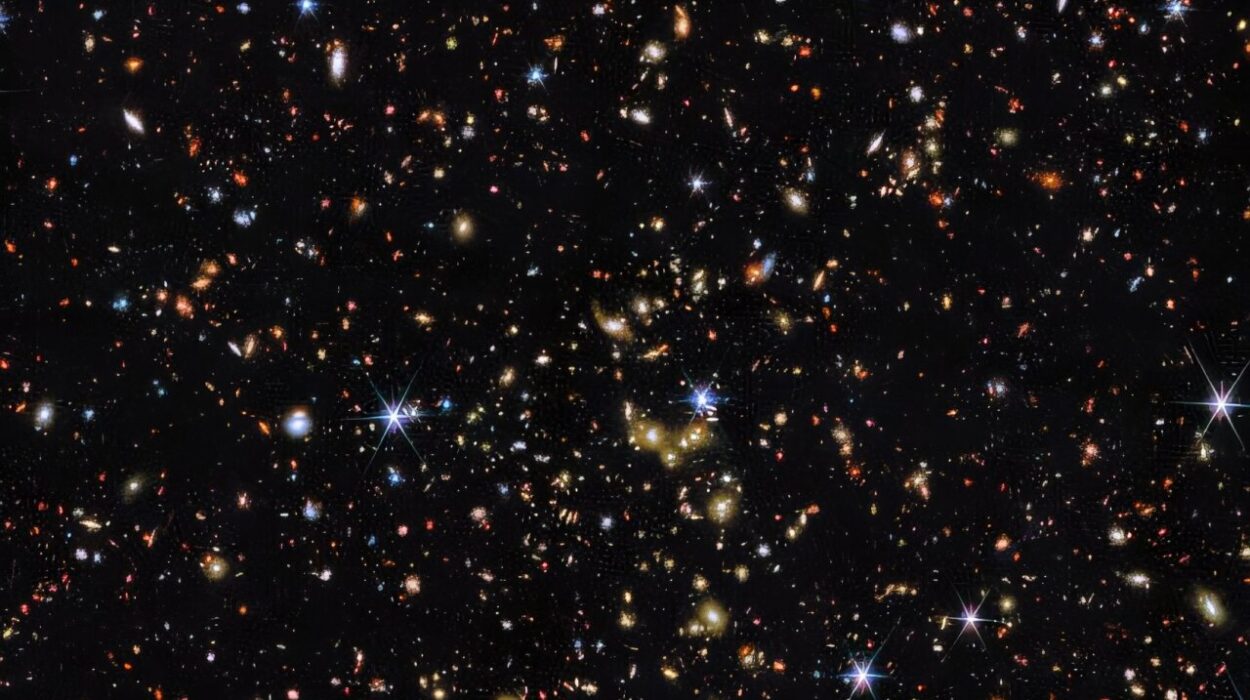On a clear night, far from the neon hum of city lights, if you gaze into the velvet darkness of the northern sky, you might spot a faint smudge of light. Just above the constellations of Cassiopeia and Pegasus, there it is: a hazy, oval glow. This is not a star, nor a nebula. What you’re seeing is the light of a trillion suns combined, taking over two million years to reach your eyes. This is the Andromeda Galaxy—the grandest neighbor in our cosmic block.
Andromeda, or M31 as astronomers catalog it, is the largest galaxy in our Local Group, a sprawling collection of over 50 galaxies that includes our own Milky Way. But Andromeda isn’t just a distant curiosity through a telescope; it plays a key role in our galaxy’s future. In roughly 4 billion years, Andromeda and the Milky Way will engage in an epic gravitational dance—a slow-motion collision that will reshape both galaxies and forge an entirely new cosmic structure.
But what exactly is Andromeda? What secrets does it hold? And what will happen when these two galactic titans meet? Let’s embark on a journey into the depths of the universe to find out.
Meet Andromeda—A Giant Next Door
A Giant Among Galaxies
Andromeda is a spiral galaxy, much like the Milky Way. It stretches over 220,000 light-years across, more than twice the size of our own galaxy, and contains about one trillion stars. Some of these stars are young and hot, blazing blue and white in vast star-forming regions, while others are ancient, red and dying, slowly fading into cosmic history.
It lies about 2.537 million light-years from Earth. To put that into perspective: light, the fastest thing in the universe, takes over two and a half million years just to travel from Andromeda to us. And yet, Andromeda is on the move. It’s barreling toward us at a breakneck speed of about 110 kilometers per second—roughly 250,000 miles per hour.
But this cosmic juggernaut isn’t a lone traveler. It brings with it a retinue of satellite galaxies, such as M32 and M110. These smaller galaxies are gravitationally bound to Andromeda, circling it like moons around a planet. Together, they form a vast empire, a gravitationally bound city of stars.
How We Know What We Know
You might wonder, how can we possibly know all of this? After all, we’ve never sent a spacecraft to Andromeda. The answer lies in the tools of modern astronomy: powerful telescopes, spectrometers, and careful measurements of light.
Andromeda was first noted by Persian astronomer Abd al-Rahman al-Sufi in 964 AD in his “Book of Fixed Stars.” Back then, it was called the “Little Cloud.” For centuries, people thought it was a nebula within our Milky Way. It wasn’t until Edwin Hubble’s groundbreaking work in the 1920s that Andromeda’s true nature was revealed. Using Cepheid variable stars—stars that pulse in brightness at predictable intervals—Hubble was able to measure Andromeda’s distance. The numbers were staggering: Andromeda wasn’t a cloud in our galaxy; it was an entire galaxy of its own, far beyond the Milky Way.
The Slow-Motion Collision—What Happens When Galaxies Collide?
Gravity Is the Great Matchmaker
Gravity is the invisible hand that sculpts the universe. It draws stars into galaxies, holds planets in orbit, and pulls galaxies toward one another in a never-ending cosmic waltz. Andromeda and the Milky Way are gravitationally bound, hurtling toward an inevitable encounter.
The idea of two galaxies colliding might sound cataclysmic—and in some ways, it is. But it’s not like two cars smashing into each other. Galaxies are mostly empty space. The average distance between stars in a galaxy is so vast that, when the two galaxies collide, stars will almost always pass by one another without impact.
That doesn’t mean it’s a peaceful process. The gravitational forces during the collision will be titanic. Tidal forces will distort both galaxies, pulling vast streams of stars into intergalactic space. Giant clouds of gas and dust will slam into each other, triggering intense bursts of star formation—what astronomers call a “starburst” event. New stars, many larger and hotter than our Sun, will be born in brilliant clusters.
What About Earth?
Let’s get this out of the way: Earth itself is unlikely to be physically harmed by the collision. By the time Andromeda arrives, the Sun will be about halfway through its transformation into a red giant. Life on Earth may already be a thing of the past, or humanity may have moved on to other worlds. But if we—or whatever life succeeds us—are still around, the night sky will be spectacular.
As Andromeda approaches, it will grow larger and brighter, dominating the night sky. Over millions of years, the familiar constellations will twist and distort. Eventually, the two galaxies will merge into one enormous elliptical galaxy, sometimes called “Milkomeda” or “Milkdromeda.”
Inside the Collision—A Galactic Time-Lapse
Phase 1: The First Approach (Now to ~4 Billion Years)
Right now, Andromeda is closing the gap between us. At first, nothing much will seem different. But in about 4 billion years, Andromeda will appear huge in the sky. As the galaxies draw closer, their gravitational fields will interact, and their outer halos will begin to blend.
Phase 2: The First Contact (~4 Billion Years from Now)
Andromeda’s first pass will likely send huge tidal tails of stars and gas into deep space. The beautiful spiral structures of both galaxies will become stretched and twisted. Star formation will ignite across both galaxies as their gas clouds collide and compress.
Phase 3: The Dance of Death (~5 Billion Years from Now)
After the first close encounter, the two galaxies will orbit each other a few times, their paths decaying with each pass due to gravitational friction. Their cores may eventually pass through each other, merging in a violent, yet slow-motion, collision. Supermassive black holes at their centers will spiral together, eventually combining into an even larger black hole—possibly billions of times the mass of the Sun.
Phase 4: The New Galaxy (~6 Billion Years from Now)
The chaos will settle. The new galaxy will likely be a massive elliptical galaxy, smooth and featureless compared to the elegant spirals we see today. The new supermassive black hole at its center will emit powerful radiation as it devours gas and stars that wander too close.
What Can We Learn from Andromeda?
A Laboratory for Galactic Evolution
Studying Andromeda gives us a glimpse of our own galaxy’s future. By observing its stars, structure, and motion, we can piece together how spiral galaxies form, evolve, and interact. Andromeda also offers a unique chance to study dark matter—the mysterious substance that makes up most of the mass in the universe. Its rotation curve, gravitational pull on nearby galaxies, and halo offer clues to the nature and distribution of dark matter.
A Testbed for Black Holes and Star Formation
At Andromeda’s core lies a supermassive black hole, similar to Sagittarius A* at the heart of our own Milky Way. By observing its behavior, astronomers can better understand how black holes grow and influence their galaxies. Andromeda’s star-forming regions also reveal the life cycles of stars, the formation of planetary systems, and the complex chemistry of galactic ecosystems.
Beyond the Collision—The Fate of Milkomeda
The End of the Local Group
The collision between Andromeda and the Milky Way isn’t the end of galactic evolution; it’s just one chapter. Over billions of years, Milkomeda will continue to merge with smaller galaxies in the Local Group, like the Triangulum Galaxy (M33). Ultimately, the Local Group itself may coalesce into a single giant elliptical galaxy.
An Isolated Future
In the far future—hundreds of billions of years from now—Milkomeda may become an island universe. Cosmic expansion, driven by dark energy, is accelerating. Eventually, distant galaxies will recede beyond the observable universe. The descendants of the Milky Way and Andromeda may find themselves alone in a vast, dark, and empty cosmos.
Conclusion: A Cosmic Love Story
The collision between Andromeda and the Milky Way isn’t a tale of destruction; it’s a cosmic romance. Two grand spiral galaxies, drawn together by gravity, merging to create something new and beautiful. It’s a reminder that even on the largest scales of space and time, the universe is in constant motion—changing, evolving, and becoming something greater than the sum of its parts.
And if we are lucky enough to be here—or somewhere out there—to witness it, we will see the greatest light show the universe has to offer.
